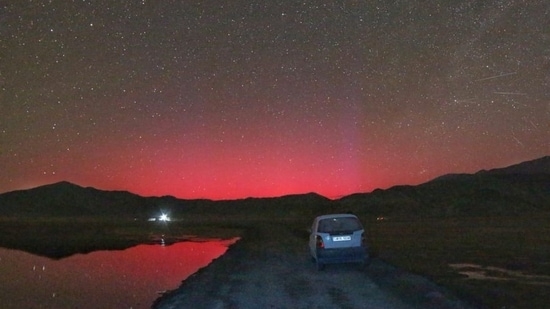The significant digits! They burn!
I can’t believe you forgot the adage:
Two-four-one-point-three, oxygen glows green.
Two-four-one-point-five, glows red like a fire.They are astronomers, they calculated the height in metric units. The fact that the threshold works out to exactly .15 kilomiles is a coincidence. /s
For those like me wondering why oxygen emission depends on altitude, it’s that the excited lifetime is very long for red, so it tends to decay via collisions at lower altitudes.
TIL, there’s oxygen molecules above 240Km. I thought there’s hardly anything above 100Km and that’s why they set it as the lowest boundaries of space.
There is hardly anything. However, there’s never nothing. The atmosphere is a thin and continuously decreasing thing, but there’s no point where it stops. Space is nearly a vacuum, but technically not totally. It’s close enough that we normally say it is, but there are particles bouncing around.
It’s cute the atomic oxygen is excitied, too <3
Is this color difference related to Rayleigh scattering? i.e. the reason why the sky is blue, and why sunsets are red?
If it is viewed from far and on a high altitude, would the light appear red shifted?
The answer is almost certainly no but I’m curious why you think this might be the case
 I was reading on this aurora phenomenon and saw that in some parts of Himalayas, aurora was seen red.
I was reading on this aurora phenomenon and saw that in some parts of Himalayas, aurora was seen red.That’s a cool photo, thanks for sharing.
For more context why this wouldn’t be related to redshift, redshift is a concept in physics for light that’s analogous to the Doppler shift for sound. The typical example of Doppler shift is the EEEEE-OO-UUUUUM sound a car makes when moving fast past you. When the car is speeding away from you, the sound pitch is noticeably lower
Similarly, when a light emitter moves away from you at extremely fast speeds (i.e. hundreds of millions of meters or yards per second), the light you see reaching you will be shifted down in frequency, towards red in visible light. This can happen in other more complicated relativistic situations too but they are less easy to explain and also not applicable here
I don’t know why the people in the photo see this beautiful red aurora but redshift is almost certainly not a related concept here
Oh I think I got things confused there. I was referring to the phenomenon where the sky looks red-pinkish on evenings because the Rayleigh scattering.
Yeah I would say that one could explain the picture here
Ultimately, the phenomenon is happening much much higher up in the atmosphere, so being a few kilometers closer vertically won’t make a difference; but by being further up on the ground, you could see an aurora from further away and through a lot more molecules that could scatter non-red light
Why is the distance in miles a whole number while the distance in metric is not?


